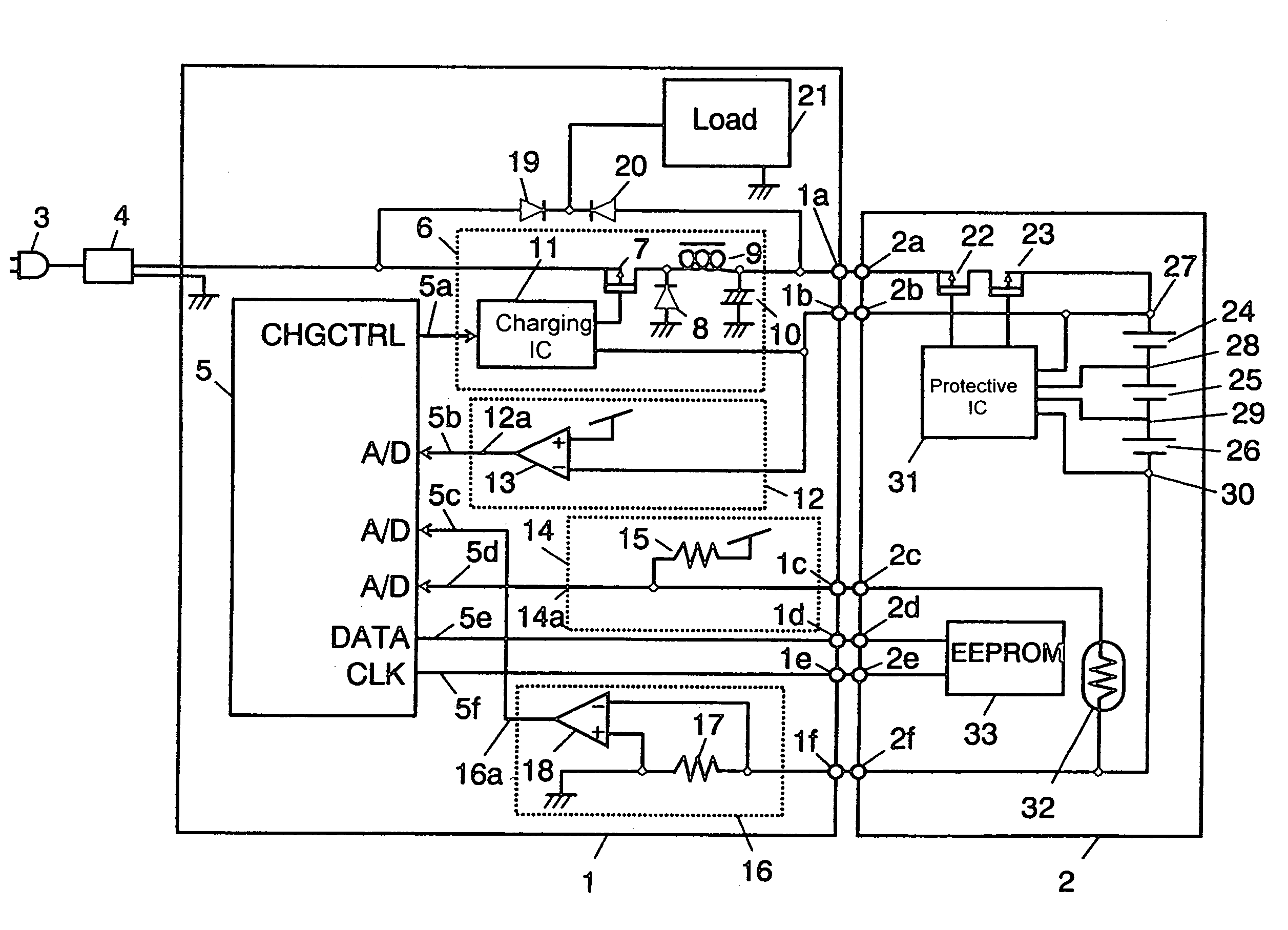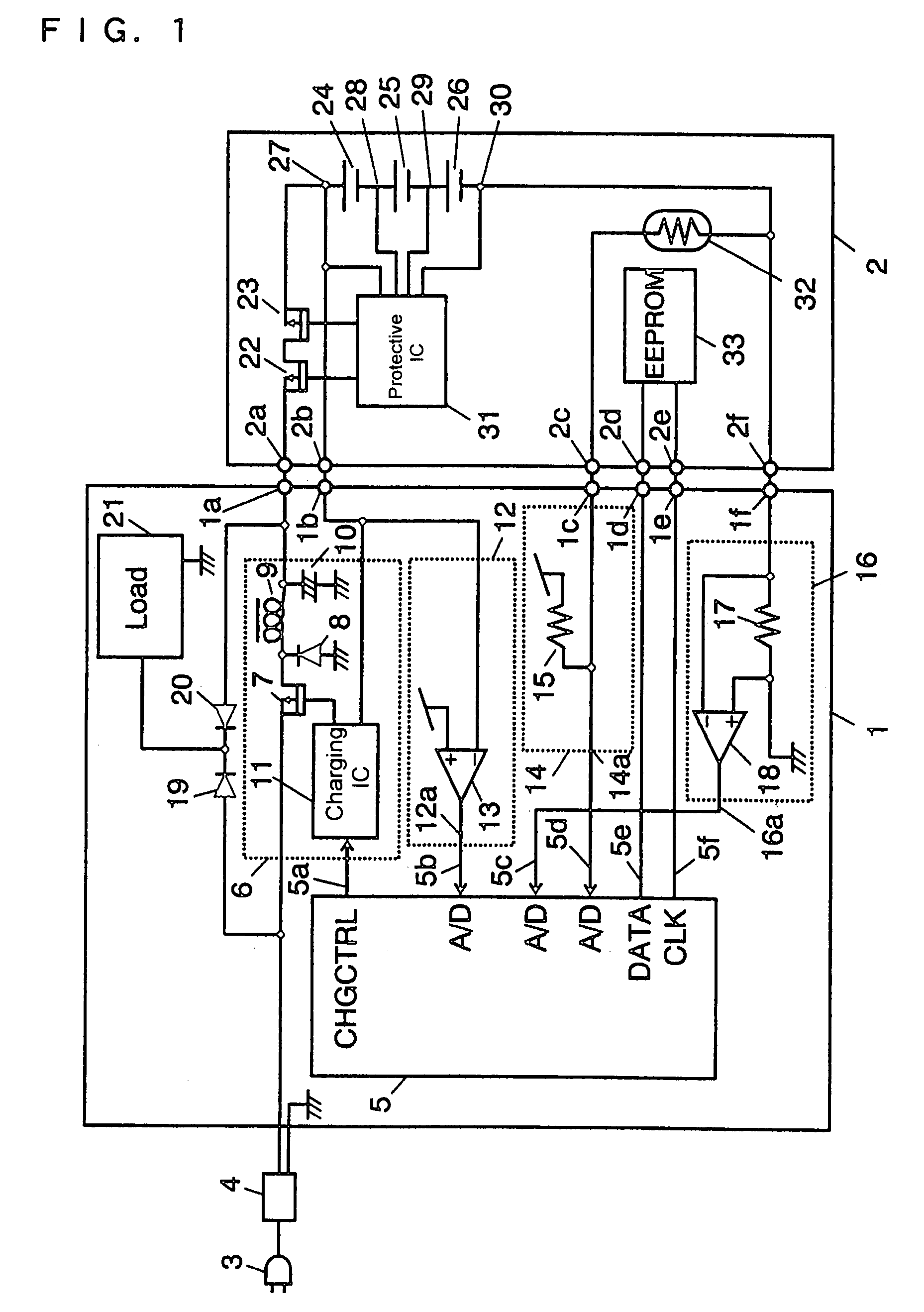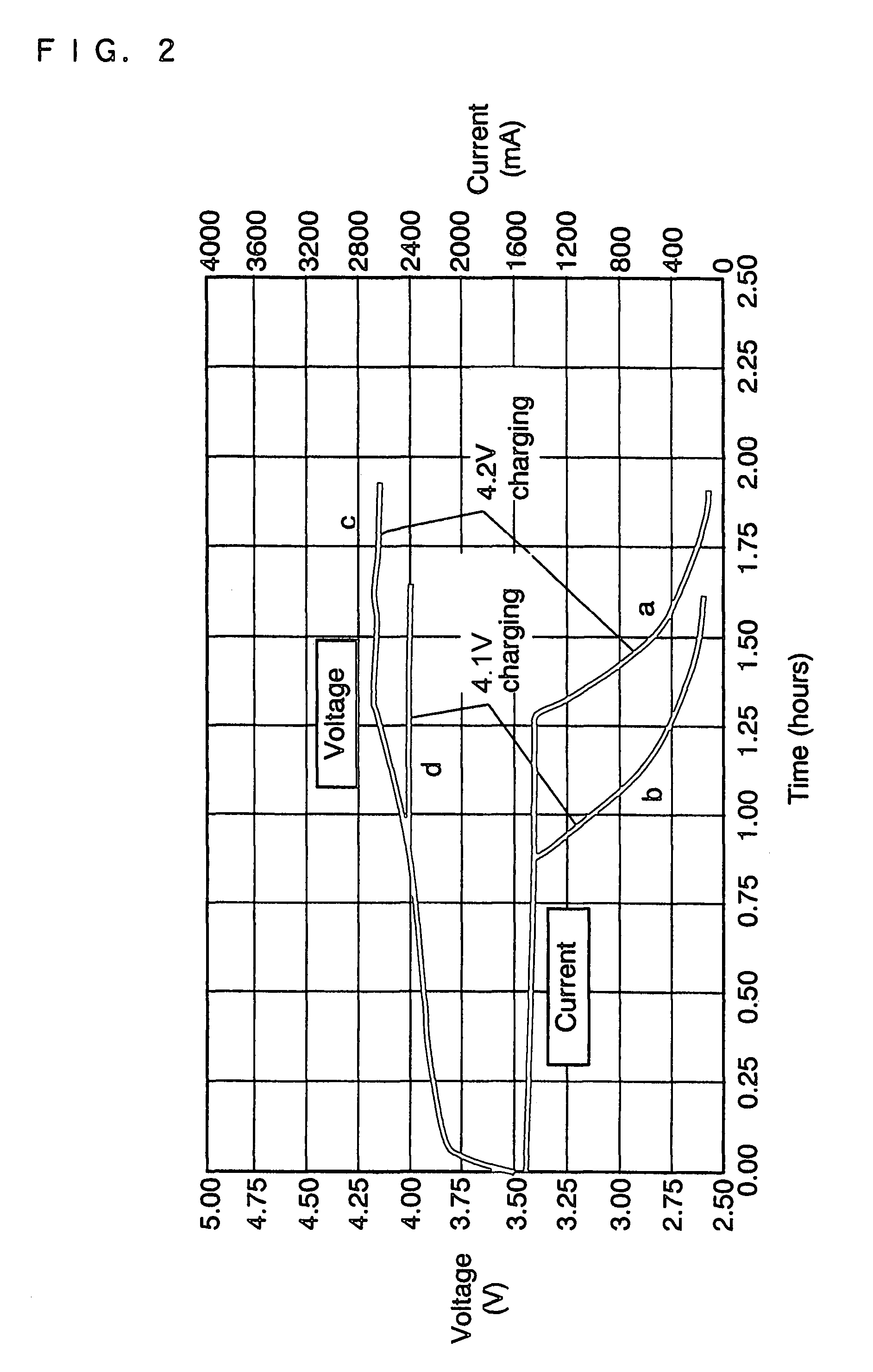Charge control device
a technology of charge control and control device, which is applied in the direction of secondary cell servicing/maintenance, instruments, electrochemical generators, etc., can solve the problem of shortening the life of the battery
- Summary
- Abstract
- Description
- Claims
- Application Information
AI Technical Summary
Benefits of technology
Problems solved by technology
Method used
Image
Examples
embodiment 1
Preferred Embodiment 1
[0028]The charge control device in preferred embodiment 1 of the invention is described below while referring to the accompanying drawings. FIG. 1 is a circuit diagram of the charge control device. FIG. 2 is a charge characteristic diagram of lithium ion secondary battery used in the charge control device. FIG. 3 is a charge and discharge cycle characteristic diagram of battery by difference in charging voltage of lithium ion secondary battery in preferred embodiment 1. FIG. 4 is an explanatory diagram of counting method of charge and discharge cycles of the lithium ion secondary battery.
[0029]The structure shown in FIG. 1 may be roughly divided into main body 1 and battery pack 2 of the charge control device. These two blocks are mutually connected detachably by means of terminals 1a to if at the side of main body 1, and terminals 2a to 2f corresponding to the side of battery pack 2.
[0030]A specified voltage is supplied to main body 1 of the charge control dev...
embodiment 2
Preferred Embodiment 2
[0064]The charge control device in preferred embodiment 2 of the invention is described below while referring to the accompanying drawings. FIG. 5 is a circuit diagram of the charge control device, and FIG. 6 is an explanatory diagram of state of use of rechargeable battery. Preferred embodiment 2 refers also to FIG. 4 showing the charge and discharge cycle counting method of lithium ion secondary battery.
[0065]Due to the characteristics of a lithium ion secondary battery, its deterioration progresses, even if it is not used much. That is, the deterioration characteristics of the lithium secondary battery progress, even if the number of times of charging and discharging is small or kept in charged state. In particular, deterioration is very quick when the battery voltage is maintained in high state. For example, when used in AC floating state by connecting to the AC power supply and using while charging, it is used in a range from point A to point B of battery ...
embodiment 3
Preferred Embodiment 3
[0076]The charge control device in preferred embodiment 3 of the invention is described below while referring to the accompanying drawings. FIG. 7 is a circuit diagram of the charge control device, and FIG. 8 is an explanatory diagram showing an example of setting of voltage value for transfer from CC charging to CV charging corresponding to the duration of its use.
[0077]Due to the characteristics of a lithium ion secondary battery, as mentioned above, its deterioration progresses if not used much. That is, the deterioration characteristics of the lithium secondary battery progresses, even if the number of times of charging and discharging is small or kept in charged state. In consideration of such characteristic of lithium ion secondary battery, in preferred embodiment 3, it is intended to decrease gradually the charging voltage value for transfer from CC charging to CV charging depending on the duration of use from start of secondary battery. Therefore, it is...
PUM
| Property | Measurement | Unit |
|---|---|---|
| constant voltage | aaaaa | aaaaa |
| specific voltage | aaaaa | aaaaa |
| voltage | aaaaa | aaaaa |
Abstract
Description
Claims
Application Information
 Login to View More
Login to View More - R&D
- Intellectual Property
- Life Sciences
- Materials
- Tech Scout
- Unparalleled Data Quality
- Higher Quality Content
- 60% Fewer Hallucinations
Browse by: Latest US Patents, China's latest patents, Technical Efficacy Thesaurus, Application Domain, Technology Topic, Popular Technical Reports.
© 2025 PatSnap. All rights reserved.Legal|Privacy policy|Modern Slavery Act Transparency Statement|Sitemap|About US| Contact US: help@patsnap.com



